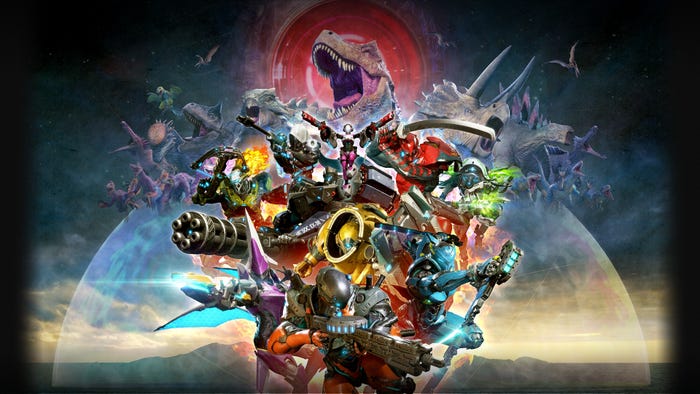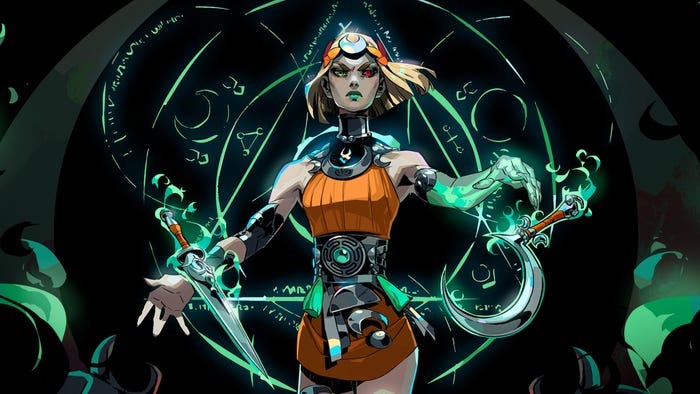
Featured Blog | This community-written post highlights the best of what the game industry has to offer. Read more like it on the Game Developer Blogs.
The Evolution of Controllers
In this blog post, we take a closer look at the history of controllers, the very thing we use to play our games. Why did they come about? Where will they go? How will they augment our games?

crossposted from www.moosetacular.com
When you sit down and play a game, no matter what game you play, there are always controls. Controls are the first obstacle that anyone playing a game must overcome. To even start a new game, players often have to navigate a menu structure using a controller. The controller may be a console controller, a keyboard/mouse, or nowadays, even your own body. The evolution of *how* we play games with these controller has a profound impact on our perception of them. I'm going to analyze the history of controllers, and try to predict where they are going from here.
Each control style has a style best suited for it, so I will not pretend to judge the value of each of these controller types. Instead, I will outline the change of our controllers and each step/motivation along the way.
Analog Controls - Dials and Joysticks
The original Atari controller, as well as the dials on the machines first running pong, were analog controllers. These were adaptations of current technology for use in a new and exciting way. They gave the user a true "feel" of the game, but could become inaccurate over time, as the analog components degrade. This was an adaptation of current technology for a desired use.
Keyboards - Typing
Many text games were made once it became viable for users to receive/display large amounts of text. Typing on a keyboard, as we are all aware, involves a series of discrete keystrokes in a specific order. Each keystroke is evaluated individually. This type of interface allowed much more complicated commands to be issued than the analog options.
D-pad and Buttons - Controllers
This is one of the most common input methods for games. All of the current generation consoles allow for this type of controller interface. It allows an analog feel for inputs which we want multiple gradients of strength while also giving a digital on/off array of buttons to perform discrete actions with. You may run at multiple speeds, but you are either attacking or not. This came about from a need for complex actions in easily accessible locations during play, as keyboards can get confusing/cumbersome.
Mouse - Clicks
This is extremely common in simulation style games. Strategy games such as Warcraft, Starcraft, and Age of Empires all relied heavily on well orchestrated mouse clicks. To select units, issue orders, or to set up the game were all incredibly mouse-oriented. Aside from strategy games, Games like The Sims relied heavily on mouse controls to navigate the often deep user interface. This type of control was suited to allow players to feel somewhat removed from the game, as opposed to the frantic button mashing involved in many controller games.
Keyboard and Mouse - Simultaneous
I believe that the simultaneous keyboard/mouse controller has hit its apex in the First Person Shooter genre. This control set was born out of the need to have complex commands, like a controller or keyboard, but also needing the precision which had been demonstrated in the strategy genre. Suddenly, complicated games could be fast paced and precise at the same time.
D-Pads, Buttons, and Motion Sensors - Controllers
While playing games, many people instinctively move the controller around. While playing racing games, players can often be seen turning their controller like a steering wheel. It was a natural evolution of the controller to match this emergent behavior and harness it as another input. The controls suddenly feel much more natural as turning your controller DOES in fact turn your racecar.
Mouse - Click and Drag
When trying to create or build, we almost always need to take some sort of action which involves applying pressure. Whether that is holding pieces of wood together while building, holding a pen to paper while drawing, or pressing on clay to sculpt. Creative games have harnessed this natural feeling of ours to attempt creation inside of games. Crayon Physics, World of Goo, and even Minecraft all have strong "click and hold" methods of playing.
Pure Motion Control - Kinect
Games almost always involve highly physical activities. Fighting, running, jumping, or playing sports are common themes among games. These are also activities that are intimately familiar to the gamer population of the world. Immersion is increased greatly if motion controls are set up well. If you really jump and the avatar jumps identically on screen, it really makes the player feel that *they* jumped a chasm, that *they* saved the princess. This was a level of connection to the game which couldn't be accomplished in any other way.
Touch Controls - Swiping
These are common controls on many smart phone games and tablet applications. These games were designed to be played quickly, with little input, and possibly with poor input as the player was jostled. As a result, the swipe was invented. Swiping is an inaccurate motion, but games largely don't care. If the swipe is in the approximately correct location, a chain of events is initiated, often involving complex physics interactions. There is a lot of feedback for a quick input, no matter what.
???? - Profit!
This leads us to the here and now. What is the next controller craze? What will define the next generation of games? Will it be an old controller, used in a different way (like the mouse click and drags) or will it be entirely new technology? (like the touch screen swipes)
I believe that it will be a repurposing of old controllers. There are a multitude of ways to use a keyboard/mouse for games which simply have not been touched yet. My current developer group, Serverus Games, is working on a way to re-invent how to interact with a keyboard.

Enter Spectrum Soldier
We are working on Spectrum Soldier, a new take on platformers. Its main feature is the use of a color system for interacting with the level and enemies. Like previous games of the genre, in order to kill specific colored enemies, one must be in a corresponding color state. This has been done in previous games, such as Ikuruga. However, we will have a unique feel to our game by involving key combinations, and holding.

In order to stay in any one color, the player must hold down a key. Keys correspond to primary colors, and must be held in concert to shift to a secondary color state. E.g. You have one key for blue, one key for red, and both must be pressed to shift purple. These controls are not toggles. much like playing a musical instrument, in order to achieve a color, the fingering must be held the whole time. These colors can be shifted rapidly by changing fingerings, to create an entire stream of colors as you pass through doors, shoot enemies, and collect powerups.

Our game is aiming creating a color instrument. You see your composition, which is the colored levels in front of you, and you must fly your way through in chorus of color combinations. This use of a keyboard to create combination commands has greatly affected the very foundation of our game idea and how we view it.
But now the real question for game developers: Are your games choosing your controls, or do you choose your game based upon your control scheme? Are both valid options?
Follow Spectrum soldier's development
on twitter: @ickmiester
on facebook: Serverus Games
on my blog: www.moosetacular.com
Read more about:
Featured BlogsAbout the Author(s)
You May Also Like













